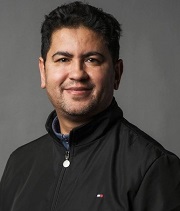
Prof. El Mostafa Kalmoun
Al Akhawayn University in Ifrane, Morocco
Title: Bilevel Optimization Formulation for Local-Global Optical Flow Models
Abstract:
This talk presents a theoretical and analytical exploration of bilevel optimization for optical flow computation, with a focus on unifying local and global methodologies. We introduce a general bilevel framework where:
-
The lower-level problem computes the optical flow field, combining a data term inspired by the Lucas-Kanade method with a global regularizer (quadratic or total variation).
-
The upper-level problem optimizes the scalar regularization parameter to enhance flow accuracy.
We establish rigorous conditions on the image data that ensure the existence of an optimal regularization parameter. Furthermore, we characterize scenarios where global regularization provably improves optical flow estimation as demonstrated by a strictly positive optimal parameter. Our analysis provides key insights into when and why such regularization benefits flow computation by bridging theoretical guarantees with practical implications for vision systems.
Biography:
El Mostafa Kalmoun received his doctorate in Applied Mathematics (Optimization) from Cadi Ayyad University, Morocco in 2001, then was a recipient of the MIF grant at Niigata University, Japan, and held a postdoctoral position at Erlangen-Nürnberg University, Germany from 2001 to 2004. Afterwards, he joined Cadi Ayyad University as assistant professor and became associate professor in 2007 and full professor in 2015. He was a visiting professor in Spain, jointly at CRM and Pompeu Fabra University in Barcelona in 2007-2008, and later at University Utara Malaysia from 2009 to 2011. Before joining Al Akhawayn University, he was an associate professor at King Khalid University, Saudi Arabia from 2011 to 2018, and Qatar University from 2018 to 2021. He was awarded fellowships and grants from DAAD and DFG in Germany, Spanish Ministry of Education and Sciences, Spanish Agency of International Cooperation, French Cooperation Service, and The World Academy of Sciences. His current research interests involve vector optimization and computational mathematics with applications to image processing, nanocomposites, flow dynamics, etc.